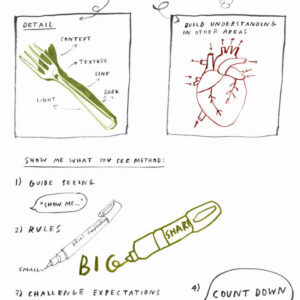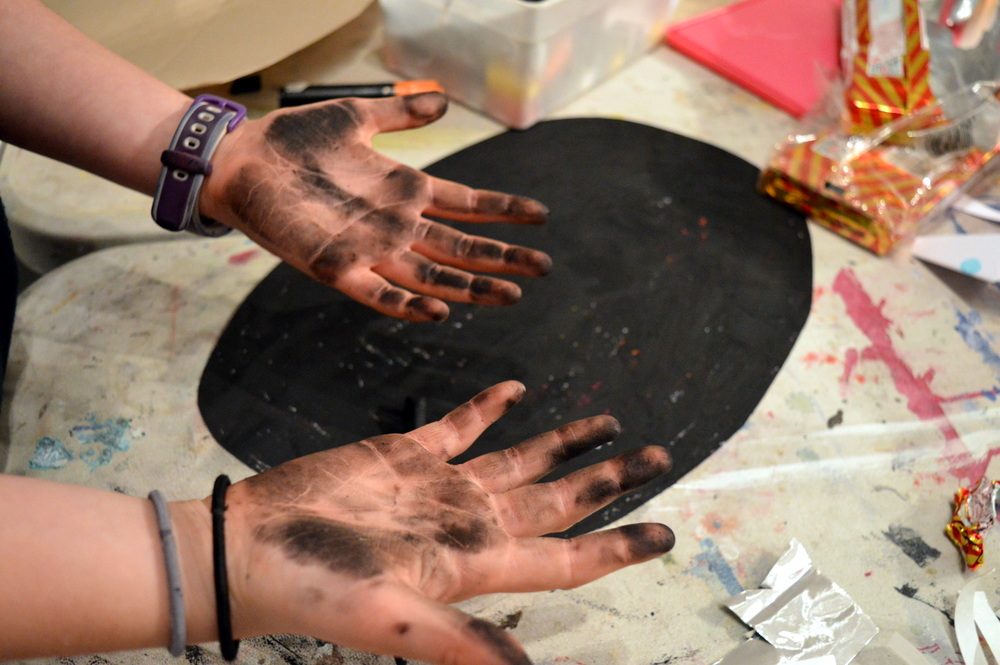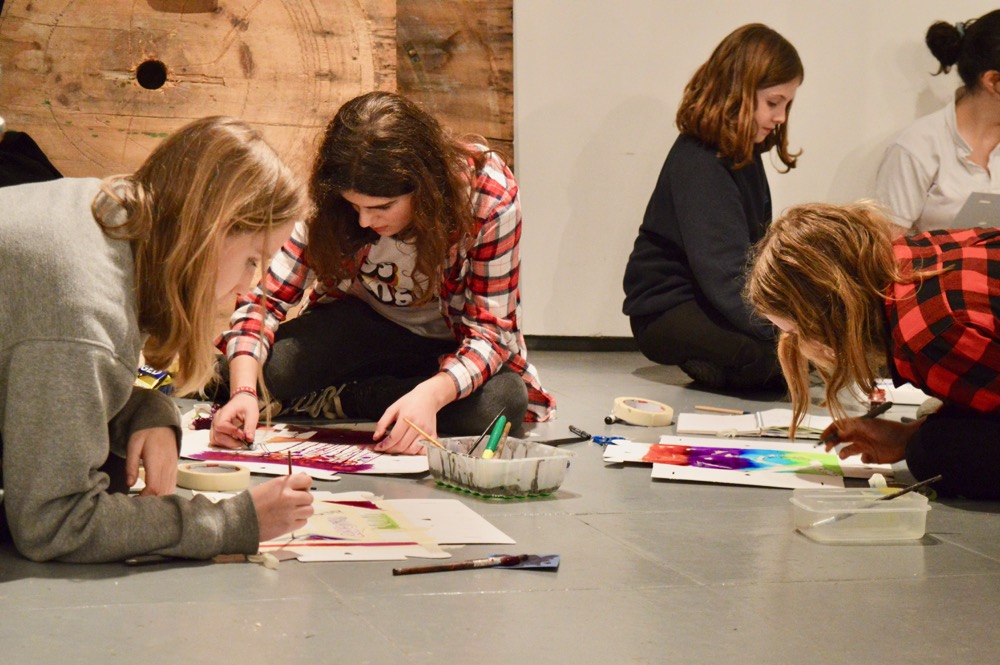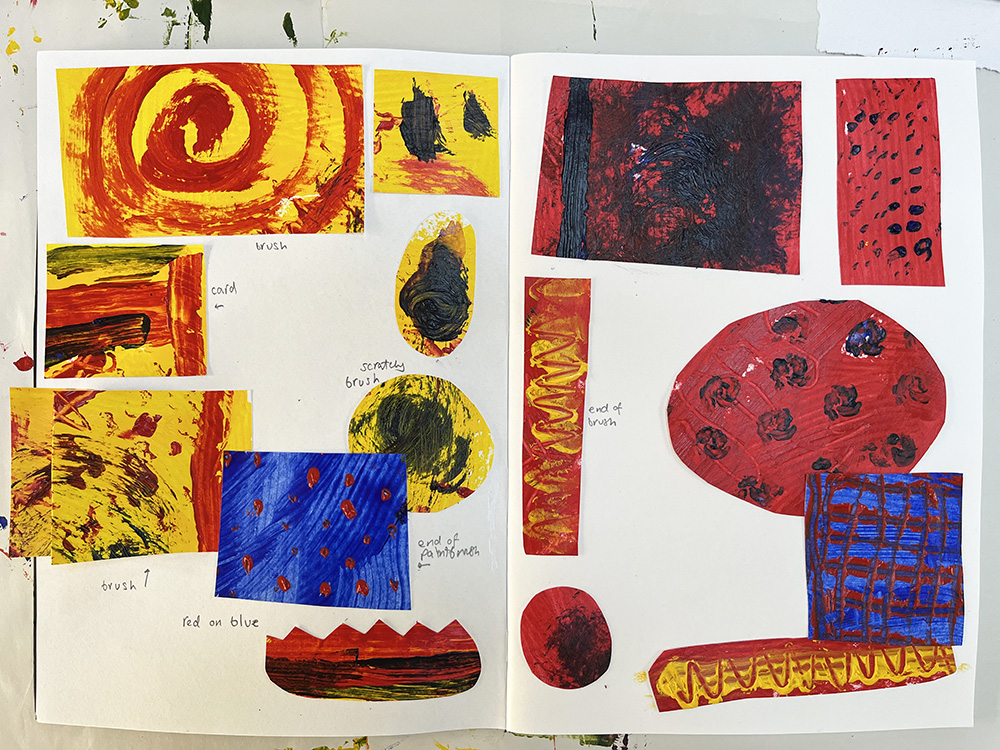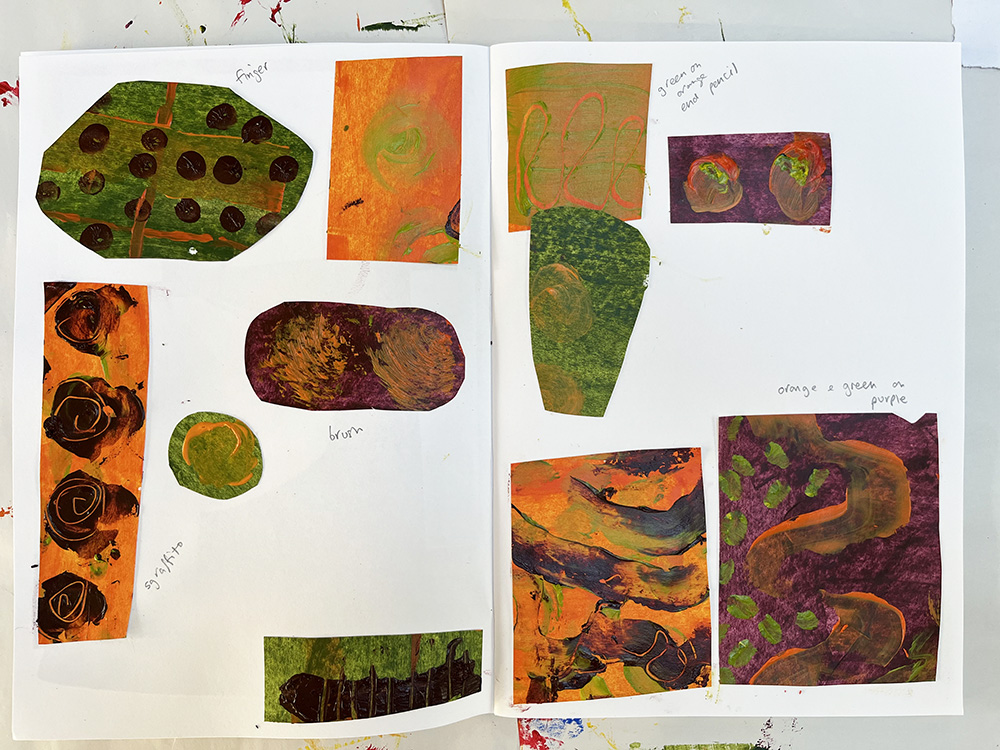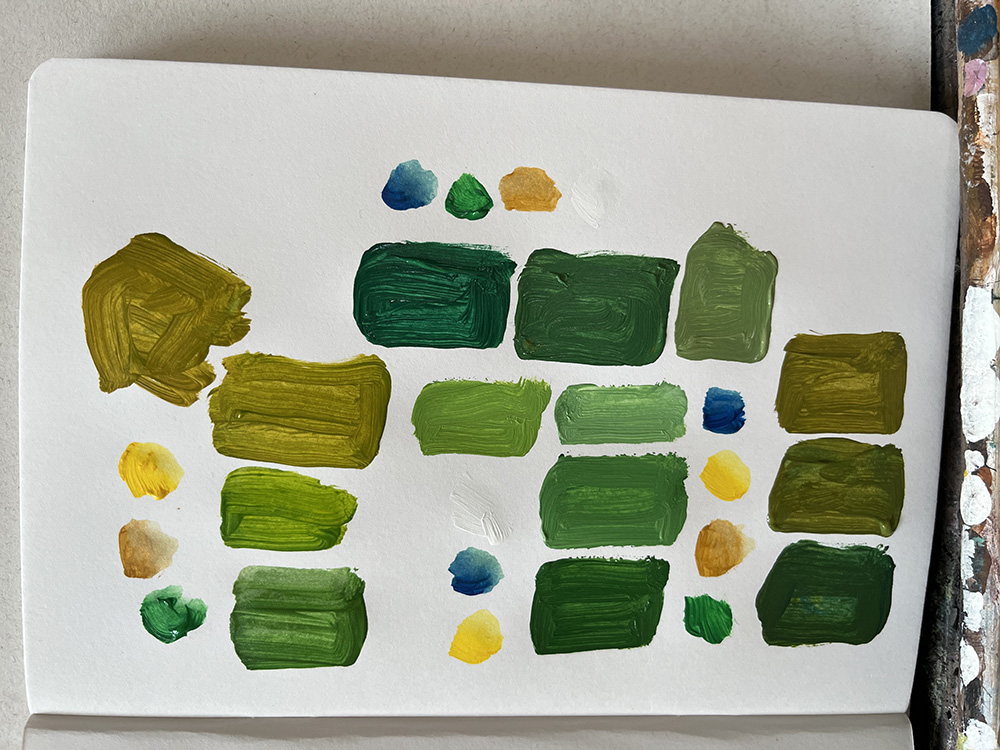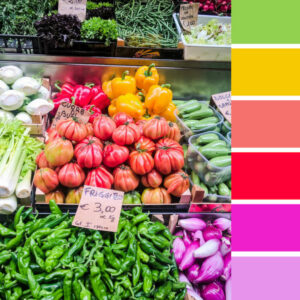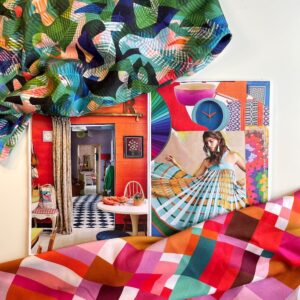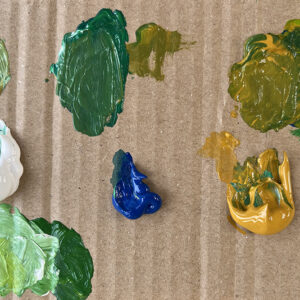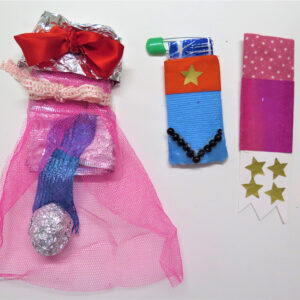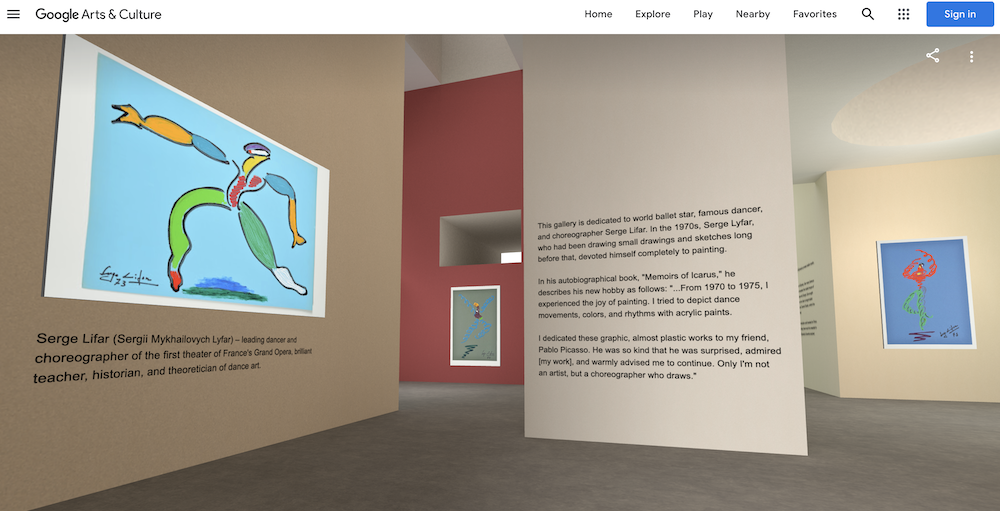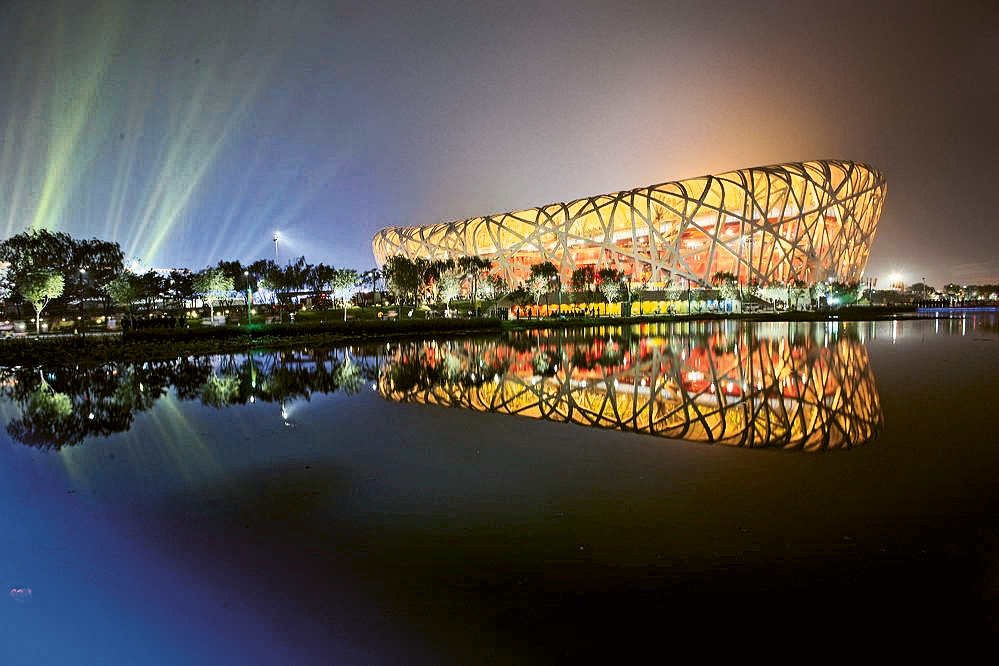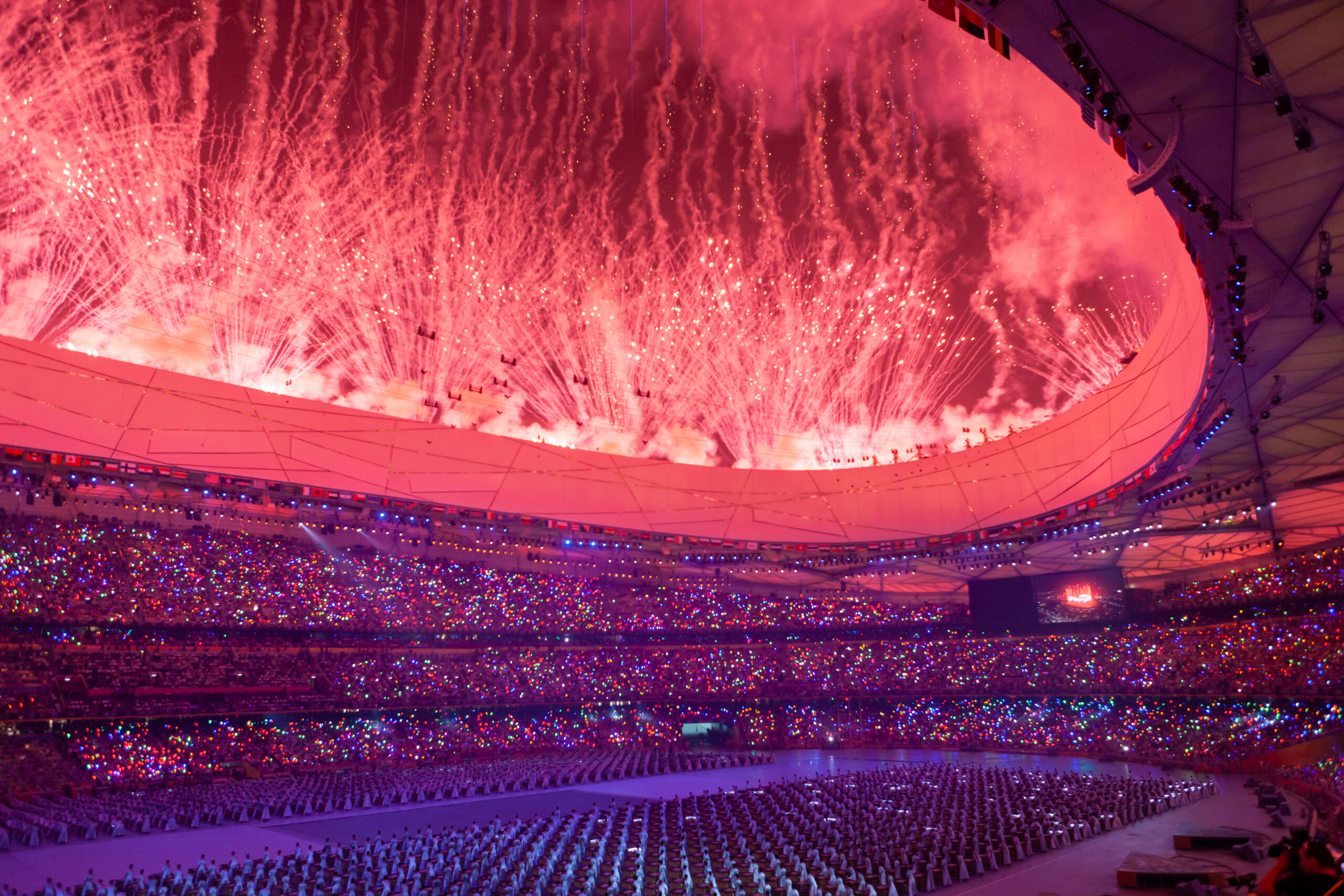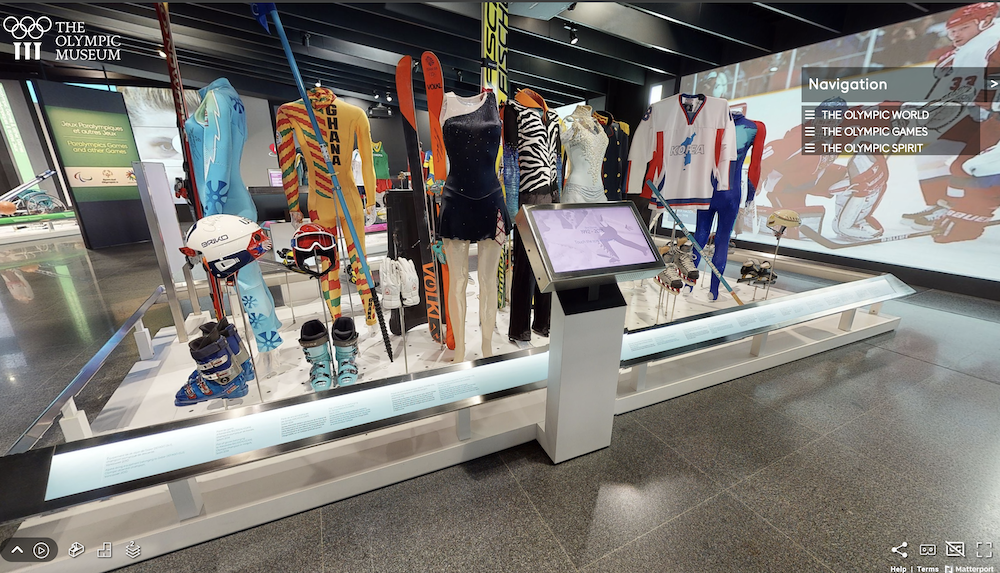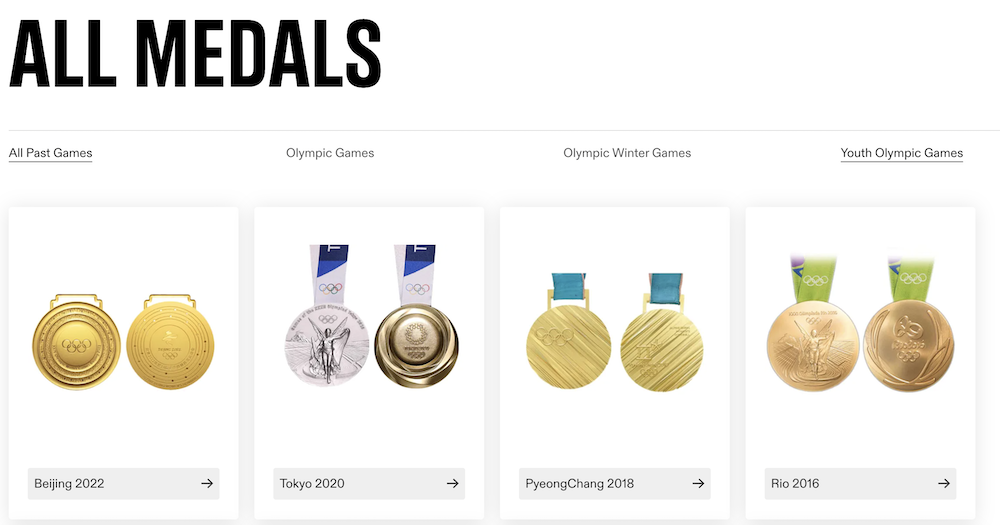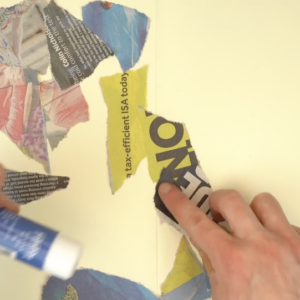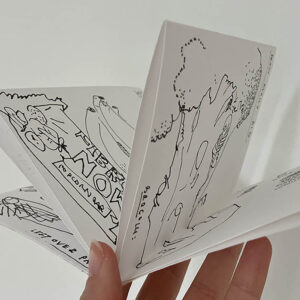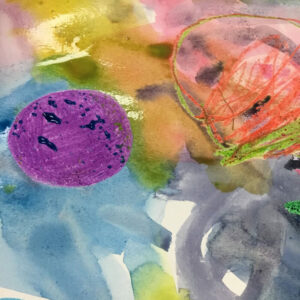A collection of imagery and sources designed to introduce children to the work of artists Christo and Jeanne-Claude.
Please note that this page contains links to external websites and has videos from external websites embedded. At the time of creating, AccessArt checked all links to ensure content is appropriate for teachers to access. However, external websites and videos are updated and that is beyond our control.
Please let us know if you find a 404 link, or if you feel content is no longer appropriate.
We strongly recommend as part of good teaching practice that teachers watch all videos and visit all websites before sharing with a class. On occasion there may be elements of a video you would prefer not to show to your class and it is the teacher’s responsibility to ensure content is appropriate. Many thanks.
*If you are having issues viewing videos it may be due to your schools firewall or your cookie selection. Please check with your IT department.*
This resource is free to access and is not a part of AccessArt membership.




Christo (1935-2020) and Jeanne-Claude (1935-2009) were multidisciplinary artists who created monumental outdoor installations, pushing the boundaries of painting, sculpture and architecture. They are known for wrapping structures, transforming islands and creating bright architectural structures in urban and rural environments.
Find out more about the life and works of Christo and Jeanne-Claude here.
‘The Mastaba’
A project for Abu Dhabi, was conceived in 1977. It will be the largest permanent work of art in the world, made from 410,000 multi-coloured barrels to form a colourful mosaic, echoing Islamic architecture. The Mastaba will be Christo and Jeanne-Claude’s only permanent, large-scale public artwork, and also their final project.’ – christojeanneclaude.net
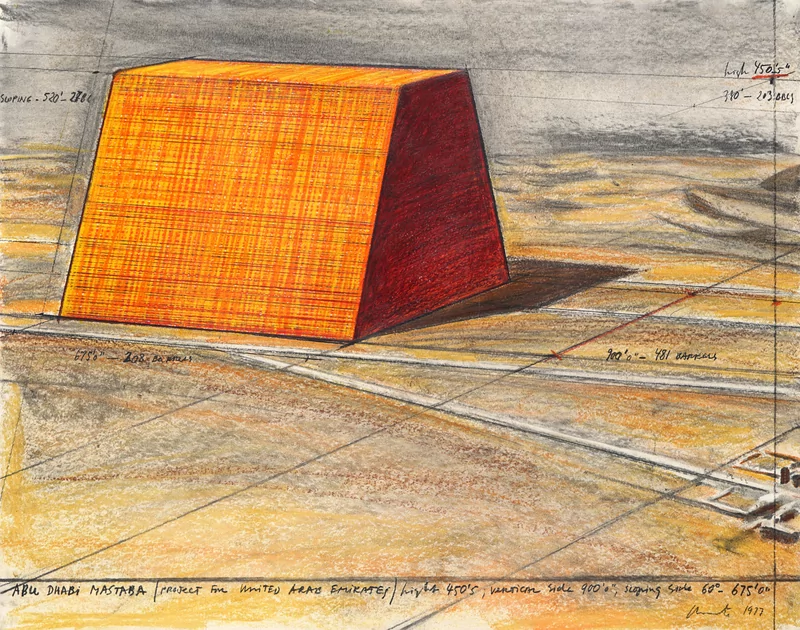
Christo, Abu Dhabi Mastaba (Project for United Arab Emirates), Drawing 1977
Pencil, charcoal, wax crayon, and pastel 56 x 71 cm (22 x 28 in)
Collection Lilja Art Fund Foundation, Switzerland
Photo: Wolfgang Volz© 1977 Christo and Jeanne-Claude Foundation
‘Wrapped Monuments’, 1970, Milan, Italy
‘The monument to the king of Italy Vittorio Emanuele II, on Piazza del Duomo, and the monument to Leonardo da Vinci, on Piazza della Scala, were wrapped with polypropylene fabric and red polypropylene rope, in the fall of 1970, in Milan, Italy.’- christojeanneclaude.net

Christo, Wrapped Monument to Vittorio Emanuele (Project for Piazza de Duomo, Milano), Collage 1970
Pencil, fabric, twine, charcoal, pastel, wax crayon, and map 71 x 56 cm (28 x 22 in)
Victoria and Albert Museum, London, United Kingdom Photo: Shunk-Kender© 1970 Christo and Jeanne-Claude Foundation and J. Paul Getty Trust
‘Surrounded Island’, 1980-83, Biscayne Bay, Greater Miami, Florida
‘For two weeks, Surrounded Islands, spreading over 11.3 kilometers (7 miles), was seen, approached and enjoyed by the public, from the causeways, the land, the water and the air. The luminous pink colour of the shiny fabric was in harmony with the tropical vegetation of the uninhabited verdant islands, the light of the Miami sky and the colours of the shallow waters of Biscayne Bay.’ – christojeanneclaude.net
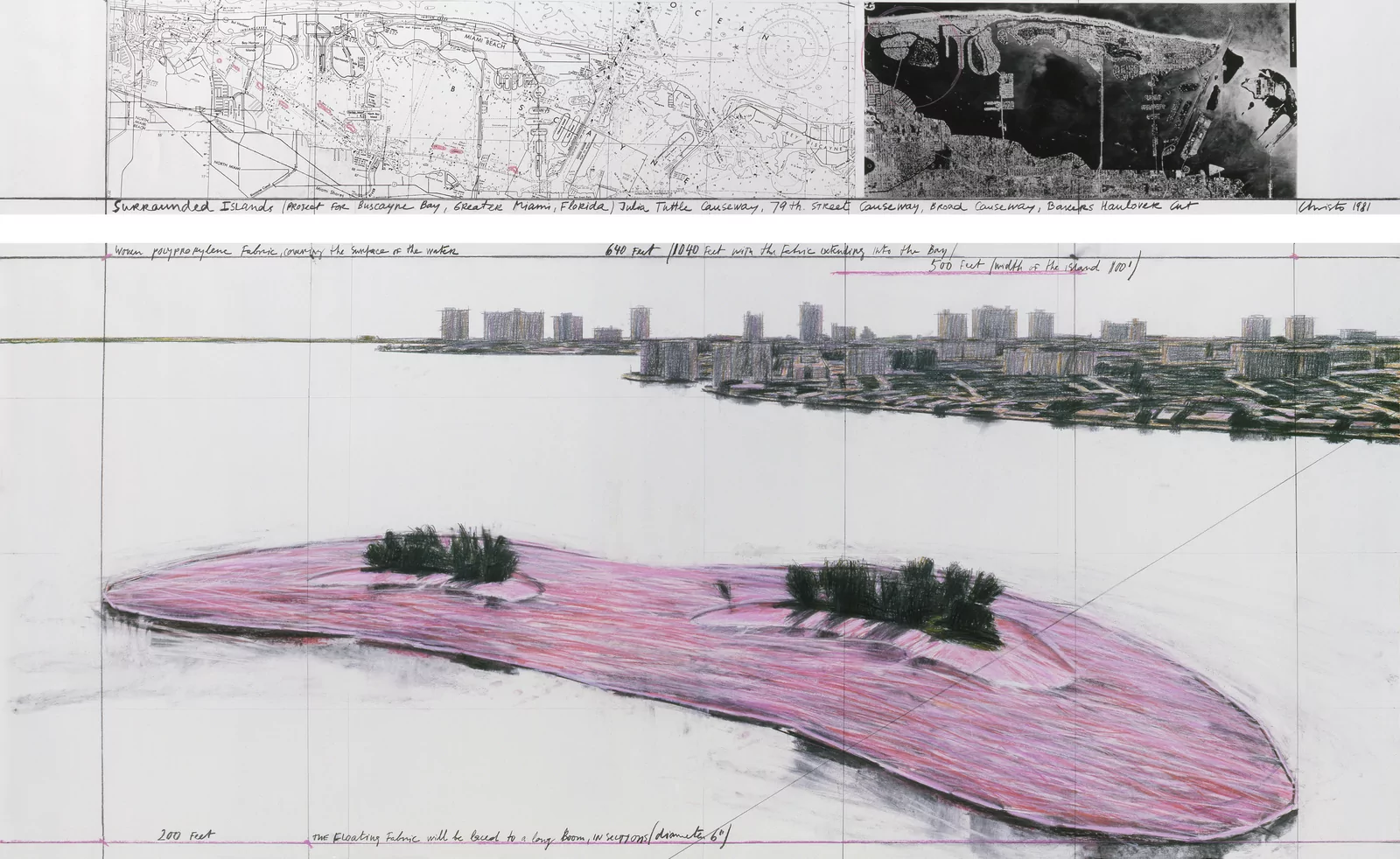
Christo, Surrounded Islands (Project for Biscayne Bay, Greater Miami, Florida), Drawing 1981 in two parts
Pencil, charcoal, pastel, wax crayon, aerial photograph, and map 38 x 244 cm and 106.6 x 244 cm (15 x 96 in and 42 x 96 in)
Property of the Estate of Christo V. Javacheff Photo: Wolfgang Volz© 1981 Christo and Jeanne-Claude Foundation
‘The Pont Neuf Wrapped’, 1975-85, Paris
‘On September 22, 1985, a group of 300 professional workers completed the temporary work of art The Pont Neuf Wrapped. They had deployed 41,800 square meters (450,000 square feet) of woven polyamide fabric, silky in appearance and golden sandstone in colour.’ Find out more about The Pont Neuf Wrapped at christojeanneclaude.net
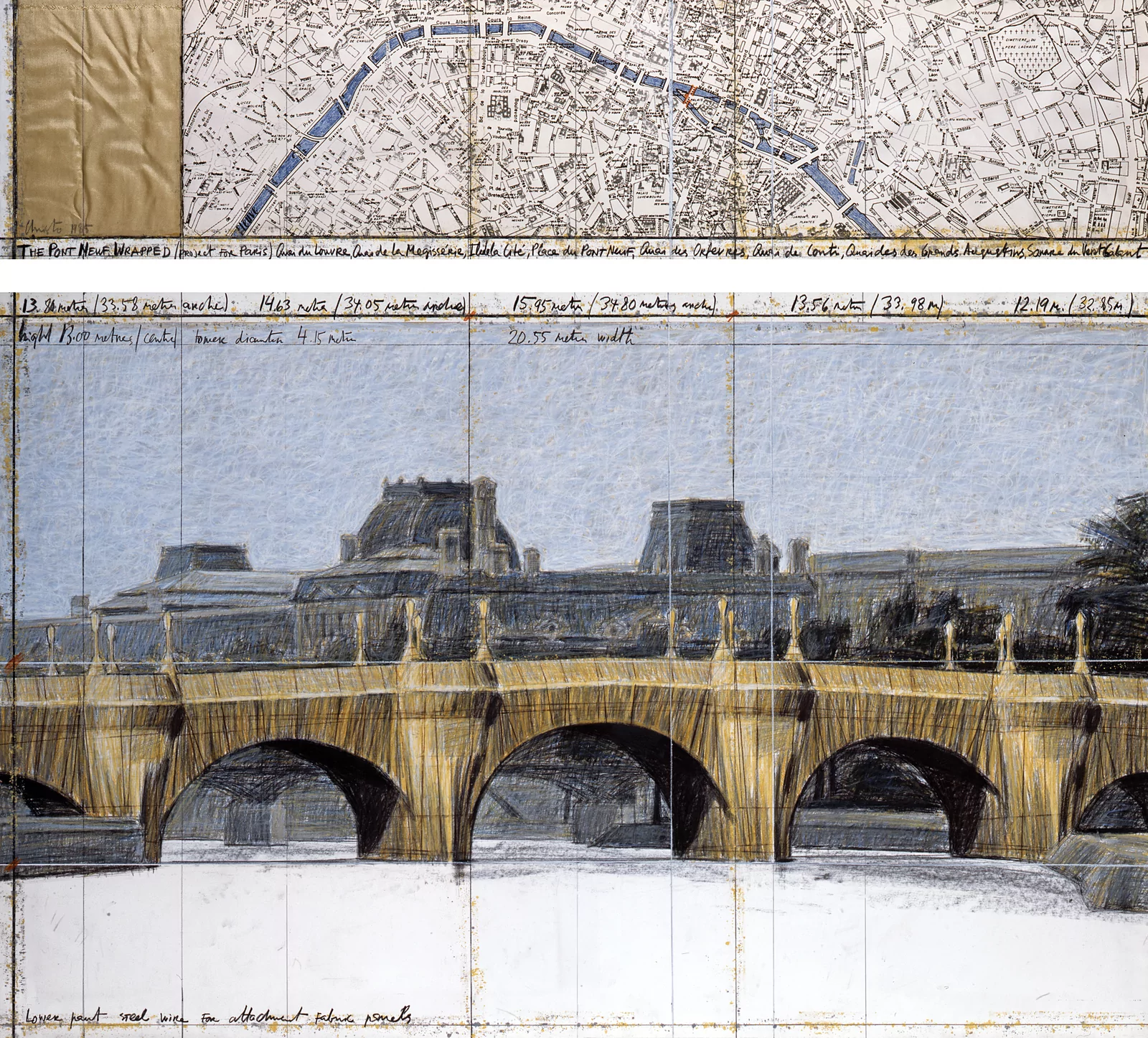
Christo, The Pont Neuf Wrapped (Project for Paris), Drawing 1985 in two parts
Pencil, charcoal, wax crayon, map, and fabric sample 38 x 165 cm and 106.6 x 165 cm (15 x 65 in and 42 x 65 in)
Private collection Photo: Wolfgang Volz© 1985 Christo and Jeanne-Claude Foundation
‘Wrapped Trees’, Fondation Beyeler and Berower Park, Riehan, Switzerland
‘Starting on Friday, November 13, 1998, 178 trees were wrapped with 55,000 square meters (592,015 square feet) of woven polyester fabric (used every winter in Japan to protect trees from frost and heavy snow) and 23 kilometers (14.3 miles) of rope. The wrapping was completed on November 22.’ – christojeanneclaude.net

Christo, Wrapped Trees (Project for the Fondation Beyeler and Berower Park, Riehen, Switzerland) Drawing 1998 in two parts
Pencil, charcoal, pastel, wax crayon, fabric sample, technical data, topographic map, and tape 38 x 165 cm and 106.6 x 165 cm (15 x 65 in and 42 x 65 in)
Fondation Beyeler, Riehen, Switzerland Photo: André Grossmann© 1998 Christo and Jeanne-Claude Foundation
Questions to Ask Children
What kind of marks can you see in these drawings?
How has Christo used mark-making to create depth?
Do the drawings of the wrapped sculptures feel heavy or light?
Which wrapped installation is your favourite? Why?
How would you feel if you came across these wrapped installations in your street or playground, without knowing who had made them or why? What would you do?
How do you think Christo and Jeanne-Claude, the artists, choose where to make their wrapped installations?
How could you make similar installations in your setting? What would you wrap? What would you wrap it in?
What would other pupils in your school think if they discovered your wrapped installation? What do you think they would do?
This Talking Points Is Used In…
Additional Pathway: Exploring Form Through Drawing
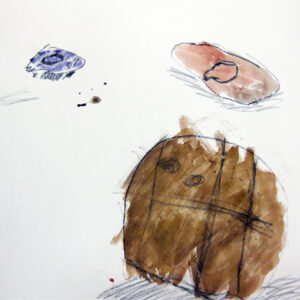
using sketchbooks to make visual notes
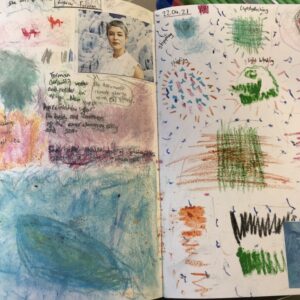
Show me what you see
